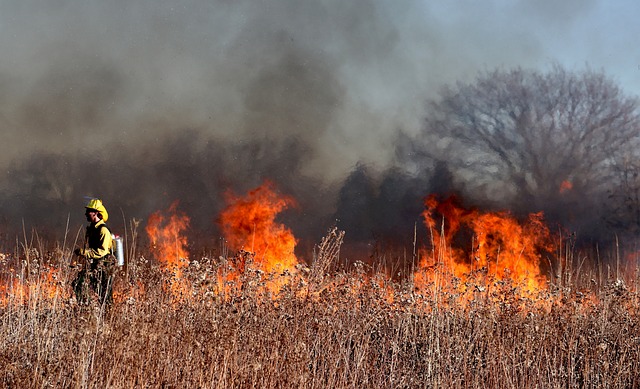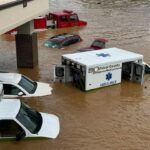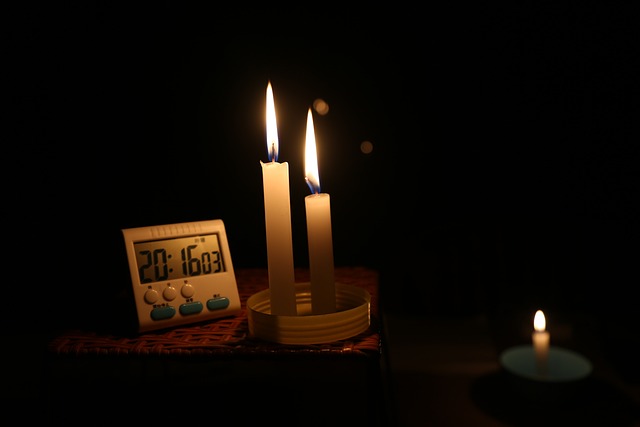
Problem: Wildfire
Scope: Local
Impact: Minor, Major (Depending on severity)
Dangers (not limited to): Personal Injury/Death, Minor Property Damage, Catastrophic Damage, Structure Fire, Utilities Interruption,
Preps (not limited to): Plan, Insurance, Fire Extinguisher, Secondary Housing, Food and Water Storage, First Aid, Backup Power Source
Wildfires are a common natural disaster that can cause severe damage to both property and life. These fast-spreading fires can be caused by natural causes such as lightning, or human factors like unattended campfires or cigarettes. Wildfires can be unpredictable, and it is essential to be prepared for them. In this blog, we will discuss the dangers of wildfires and how to prepare for them.
Dangers of Wildfires
Wildfires are dangerous due to their rapid spread, unpredictability, and long-lasting effects. They can cause damage to forests, homes, and infrastructure, as well as lead to the loss of life. Wildfires can be especially dangerous during hot and dry weather conditions, as these conditions make it easier for fires to start and spread.
Wildfires produce intense heat and thick smoke that can cause respiratory problems, eye irritation, and other health issues. The smoke can also make it challenging to breathe, making it difficult to escape the area. Wildfires can cause severe damage to the environment, leading to soil erosion, habitat loss, and water pollution.
Preparing for a Wildfire
Preparing for a wildfire is crucial to protect yourself and your property. Here are some steps you can take to prepare for a wildfire:
- Create a Defensible Space: Clearing a defensible space around your home is the first step in preparing for a wildfire. This involves removing all flammable materials from the area around your home. Cut down any overhanging branches from trees, remove dead or dying vegetation, and keep your lawn mowed.
- Make Your Home Fire-Resistant: Use fire-resistant materials for your home’s exterior, such as brick, stone, tempered glass windows, and non-combustible siding, and metal roofing. Ensure that your attic and crawl spaces are adequately vented to prevent embers from igniting.
- Prepare an Emergency Kit: Your emergency kit should include essentials like water, non-perishable food, first-aid supplies, flashlights, and batteries. Keep your emergency kit in a location that is easy to access in case of an evacuation.
- Install Smoke Alarms: Install smoke alarms in every room of your home, especially near bedrooms. Check the batteries in your smoke alarms regularly to ensure they are working properly.
- Have Fire Extinguishers: Have fire extinguishers in your home and know how to use them in case of a small fire.
- Stay Informed: Stay up-to-date on the fire’s status by listening to the local news or emergency alert systems. Know the evacuation routes and have a plan in place in case you need to leave quickly.
- Plan an Escape Route: Plan an evacuation route in case of a wildfire. Make sure everyone in your household knows the route and has practiced evacuating quickly. Keep emergency supplies in your car, such as water, food, and first-aid supplies.
- Evacuate Early: If you receive an evacuation order, leave as soon as possible. Do not wait until the last minute to evacuate.
- Have a Communication Plan: Have a plan in place to communicate with family and friends in case you are separated during an emergency. Ensure that everyone knows the plan and has a way to contact each other.

Wildfire Emergency Preparedness Kit
When preparing for a wildfire, it’s important to have an emergency kit that can sustain you and your family for at least three days. Here are some items that you should include in your wildfire emergency kit:
- Water: You’ll need plenty of water to stay hydrated, as well as for cooking and cleaning. It’s recommended to store at least one gallon of water per person per day for three days.
- Non-perishable food: Choose foods that are easy to store and don’t require cooking. Examples include canned fruits and vegetables, energy bars, peanut butter, and crackers.
- First aid kit: Injuries can occur during a wildfire, so make sure you have a well-stocked first aid kit that includes bandages, gauze, antiseptic, pain relievers, and any necessary prescription medications.
- Dust masks: Wildfires create a lot of smoke and ash, which can be harmful to breathe in. Pack several dust masks to protect your respiratory system.
- N95 respirator masks: These masks filter out smoke particles and other airborne pollutants. They should be worn by everyone in the family during the wildfire.
- Fire extinguisher: Keep a fire extinguisher on hand to put out small fires before they spread.
- Clothing and bedding: Pack a change of clothes for each family member, as well as blankets, sleeping bags, and pillows.
- Important documents: Keep copies of your important documents such as passports, birth certificates, and insurance policies in a waterproof container.
- Emergency cash: In case ATMs and banks are unavailable during a wildfire, it’s always good to have some emergency cash on hand.
- Personal hygiene items: Include items such as hand sanitizer, wet wipes, and toilet paper.
- Flashlights and batteries: Power outages are common during wildfires, so make sure to pack flashlights and extra batteries.
- Portable radio: A portable radio can help you stay up-to-date on the latest news and weather conditions.
- Phone chargers: Keep phone chargers and power banks on hand to ensure that you can stay connected during a wildfire.
- Pet supplies: If you have pets, make sure to include food, water, leashes, and any necessary medications in your emergency kit.
Remember, a wildfire emergency kit should be tailored to your family’s specific needs and preferences. Be sure to check and update your emergency kit regularly, and always stay informed about the latest wildfire alerts and evacuation orders.
In conclusion, wildfires are a severe threat to both property and life. By taking steps to prepare for a wildfire, you can protect yourself and your loved ones. Creating a defensible space, making your home fire-resistant, preparing an emergency kit, staying informed, evacuating early, and having a communication plan are all crucial steps to take to prepare for a wildfire. Remember, it is always better to be prepared for a wildfire and not need it than to need it and not be prepared.
It is our mission to educate, equip, and empower everyday ordinary civilians to understand, prepare for, and survive any emergency they face. We cannot rely on the government to take care of us. We must take it upon ourselves to provide for and protect ourselves and our families.
Note: I am an affiliate with Amazon and may receive a commission from products purchased from Amazon. This helps me continue to put out emergency preparedness information for you.










